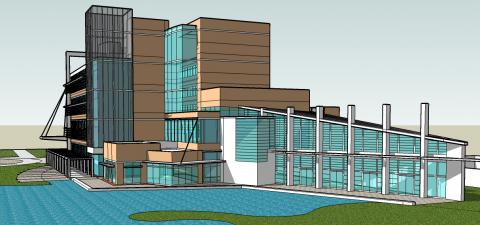Sealevel’s Commitment to Green Grows
September 14, 2010At Sealevel, we try hard to do our part for the environment. Whether through internal eco-audits or RoHS and WEEE compliance, we work to lower our carbon footprint. We always encourage our vendors and customers to do the same. So, when we have the opportunity to partner with someone who shares Sealevel’s environmental commitment, it makes our day.
Currently, we are working with a customer on a building project that has been designed and built to meet LEED Platinum certification at Florida Atlantic University. Leadership in Energy and Environmental Design (LEED) is a green building certification system that rates buildings on their carbon footprint. The system considers energy usage, emissions, types of materials used and other factors that affect the environment to assign a score for a particular structure. The platinum rating is the highest level awarded.

The engineering staff and their partners are working to integrate our SeaI/O-470E and SeaI/O 470W data acquisition modules throughout the facility. Each module provides 16 A/D inputs, 2 D/A outputs, 8 isolated inputs, and 8 open collector outputs. For areas where Ethernet ports are readily available, FAU uses the 470E. For those locations where sensors are remote and it is prohibitive to run cable, FAU uses Sealevel’s 470W to collect data. The wireless module then transmits the data over their wireless network using the Modbus protocol. FAU relies on these modules to monitor and control environmental data inside this state-of-the-art facility.
In November 2010, a web-enabled energy dashboard that allows students, facility, and visitors to see real time statistics for energy use in the building will be launched. These statistics will relay information on usage by floor, usage by time of day, or even as granular as usage by a particular server.
Learn more about Sealevel’s Green Commitment.